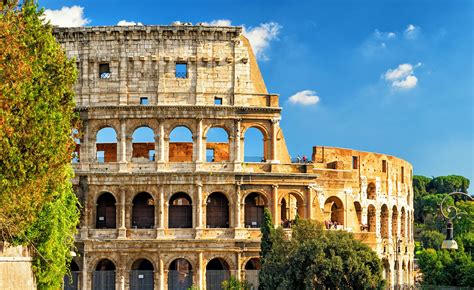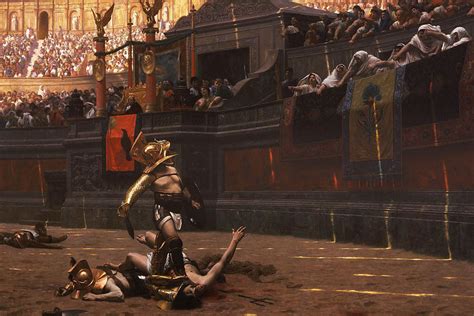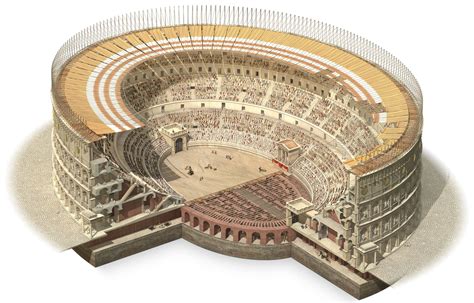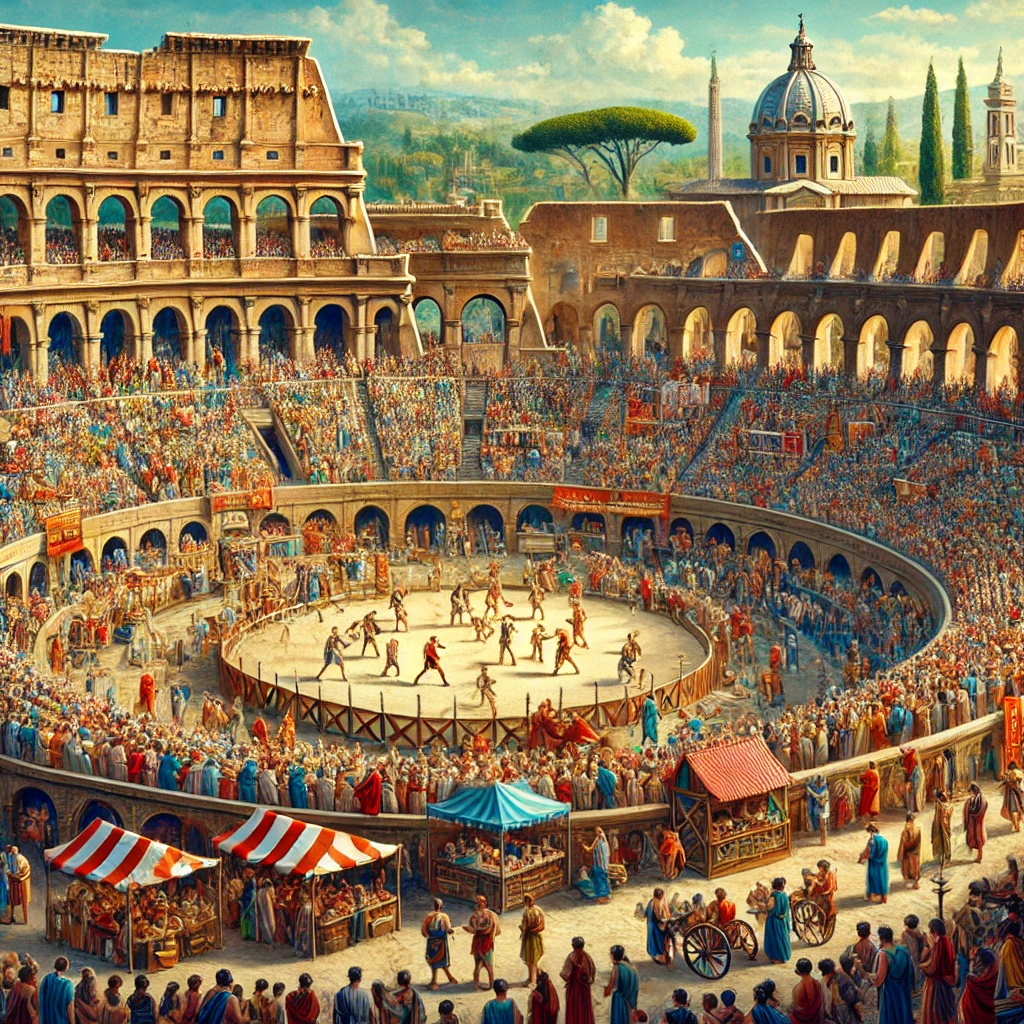The Colosseum stands as a testament to ancient Rome’s cultural values, technological advancements, and social structure. This iconic amphitheater, built nearly two millennia ago, continues to captivate our imagination and offers profound insights into Roman civilization. From its grand architecture to the spectacles it hosted, the Colosseum embodies the essence of Roman society, showcasing their engineering prowess, love for entertainment, and complex social hierarchy. As we delve into the various aspects of this magnificent structure, we uncover the multifaceted nature of Roman culture and its lasting impact on Western civilization.
The Colosseum, an enduring symbol of Rome’s grandeur, provides a window into the heart of ancient Roman society. Its massive scale and intricate design reflect the empire’s wealth, power, and architectural expertise. The arena’s primary purpose – hosting gladiatorial contests and public spectacles – reveals the Romans’ penchant for entertainment and their complex relationship with violence and death. The seating arrangement within the Colosseum mirrored the strict social stratification of Roman society, with the elite occupying the best seats closest to the action. This architectural marvel not only served as a venue for entertainment but also as a tool for political propaganda and social control, demonstrating the intricate interplay between power, spectacle, and public life in ancient Rome.
The Colosseum: A Symbol of Roman Engineering Prowess

The Colosseum, an iconic symbol of ancient Rome, stands as a testament to the remarkable engineering capabilities of the Roman Empire. This magnificent amphitheater, officially known as the Flavian Amphitheatre, was constructed between 70-80 AD under the rule of Emperor Vespasian and his successors. The sheer scale and complexity of the Colosseum demonstrate the Romans’ mastery of architecture, engineering, and construction techniques that were far ahead of their time.
The Colosseum’s design and construction showcase numerous innovative features that highlight Roman engineering prowess. One of the most impressive aspects is its elaborate system of underground chambers and passages, known as the hypogeum. This complex network allowed for the seamless management of spectacles, including the dramatic entrances of gladiators and wild animals. The Romans also implemented an ingenious system of trapdoors and elevators, powered by a combination of counterweights and manual labor, enabling swift scene changes and surprising reveals during performances.
The structural integrity of the Colosseum is another marvel of Roman engineering. The use of arches and vaults, combined with a clever mix of materials such as travertine limestone, tuff, and brick-faced concrete, allowed the building to withstand the test of time. The Romans’ understanding of weight distribution and load-bearing structures is evident in the amphitheater’s design, which has enabled it to survive for nearly two millennia despite earthquakes, fires, and centuries of neglect.
| Engineering Feature | Description |
|---|---|
| Hypogeum | Underground network of chambers and passages |
| Elevators and Trapdoors | Mechanical systems for dramatic entrances and scene changes |
| Arch and Vault System | Structural elements for weight distribution and stability |
The Colosseum’s seating arrangement and crowd management systems further exemplify Roman ingenuity. The amphitheater could accommodate up to 50,000 spectators, with a sophisticated ticketing system and designated seating areas based on social status. The Romans designed an efficient network of staircases and corridors, known as vomitoria, which allowed large crowds to enter and exit the venue quickly. This attention to crowd flow and management demonstrates the Romans’ advanced understanding of public space design and urban planning.
Gladiatorial Games: Reflecting Roman Values and Entertainment

The Colosseum, an iconic symbol of ancient Rome, served as the grand stage for gladiatorial games that reflected the core values and entertainment preferences of Roman society. These spectacles, which often pitted trained warriors against each other or against wild beasts, were not merely a form of amusement but a complex manifestation of Roman culture, politics, and social dynamics. The games held in the Colosseum were a testament to the Romans’ appreciation for bravery, skill, and the conquest of nature, while simultaneously serving as a tool for political manipulation and social control.
The gladiatorial contests were deeply rooted in Roman religious traditions, initially conceived as funeral games to honor the deceased. However, as time progressed, they evolved into elaborate public spectacles that showcased the power and generosity of the ruling class. Emperors and wealthy patrons would sponsor these events, known as ‘munera,’ to curry favor with the masses and demonstrate their influence. The Colosseum‘s vast arena, capable of holding up to 80,000 spectators, became the ultimate venue for these displays of Roman might and opulence, where the boundaries between entertainment, politics, and social hierarchy blurred.
The games themselves were a reflection of Roman military prowess and the empire’s expansionist ambitions. Gladiators, often prisoners of war, criminals, or slaves, were trained in specialized schools called ‘ludi’ to master various fighting styles and weapons. These combatants represented the diverse peoples and cultures conquered by Rome, with their performances serving as a microcosm of the empire’s dominion over foreign lands. The Colosseum‘s arena thus became a stage where Rome’s military conquests were reenacted for public consumption, reinforcing the idea of Roman superiority and the perceived barbarity of conquered nations.
The Colosseum’s Architecture: Showcasing Roman Social Hierarchy

The Colosseum, an iconic symbol of ancient Rome, stands as a testament to the empire’s architectural brilliance and social stratification. This magnificent amphitheater, constructed in the 1st century AD, not only served as a venue for spectacular entertainment but also mirrored the complex social hierarchy of Roman society. The design of the Colosseum meticulously reflected the rigid class structure, with seating arrangements that clearly delineated the various social strata.
At the ground level, closest to the arena, sat the most prestigious members of Roman society. The emperor and his entourage occupied the best seats, followed by senators, nobles, and other high-ranking officials. This arrangement ensured that the elite had the best view of the spectacles and could be easily seen by the rest of the audience, reinforcing their elevated status. As one moved higher up the Colosseum‘s seating tiers, the social rank of the occupants decreased, with the upper levels reserved for the common citizens and, at the very top, women and slaves.
The Colosseum‘s architecture also incorporated distinct entrances and passageways for different social classes. The emperor and senators had private entrances and exclusive access to certain areas, while the general public entered through numbered archways corresponding to their designated seating sections. This systematic organization of space within the amphitheater served to reinforce the social boundaries and hierarchies that were deeply ingrained in Roman culture.
| Seating Level | Social Class |
|---|---|
| Ground Level | Emperor, Senators, Nobles |
| Middle Tiers | Wealthy Citizens, Knights |
| Upper Levels | Common Citizens, Women, Slaves |
The materials used in the construction of different sections of the Colosseum also reflected the social hierarchy. The lower levels, reserved for the elite, were adorned with marble seats and ornate decorations, while the upper levels had wooden benches. This disparity in comfort and luxury further emphasized the societal divisions and privileges accorded to different classes.
Frequently Asked Questions

The Colosseum is an ancient amphitheater located in Rome, Italy, known for its grandeur and historical importance. It signifies the architectural prowess of the Roman Empire and serves as a symbol of Roman culture, showcasing their values, entertainment, and societal structure.The Colosseum was designed to accommodate different classes of society, with seating arrangements that reflected social hierarchies. The elite had the best seats, while the lower classes were located in less desirable areas, highlighting the class distinctions prevalent in Roman society.The Colosseum hosted a variety of events, including gladiatorial contests, mock sea battles, animal hunts, and public executions. These spectacles were a means of entertainment for the Roman populace and displayed the power and wealth of the empire.The architecture of the Colosseum, particularly its use of arches, vaults, and concrete, influenced the design of many later structures, including modern sports stadiums. Its innovative design principles are still evident in contemporary architecture around the world.The Colosseum is a testament to Roman engineering, showcasing advanced construction techniques, such as the use of concrete and complex systems of vaults. Its ability to hold thousands of spectators and host elaborate events reflects the innovation and organizational skills of the Romans.The Colosseum was a central part of Roman life, serving as a place for entertainment, public gatherings, and religious ceremonies. It was a venue where citizens could socialize and experience collective events that reinforced their cultural identity.Initially celebrated as a marvel of architecture, the Colosseum fell into neglect during the Middle Ages. In modern times, it has been restored and revered as a UNESCO World Heritage site, representing the rich history of Rome and attracting millions of tourists each year.


